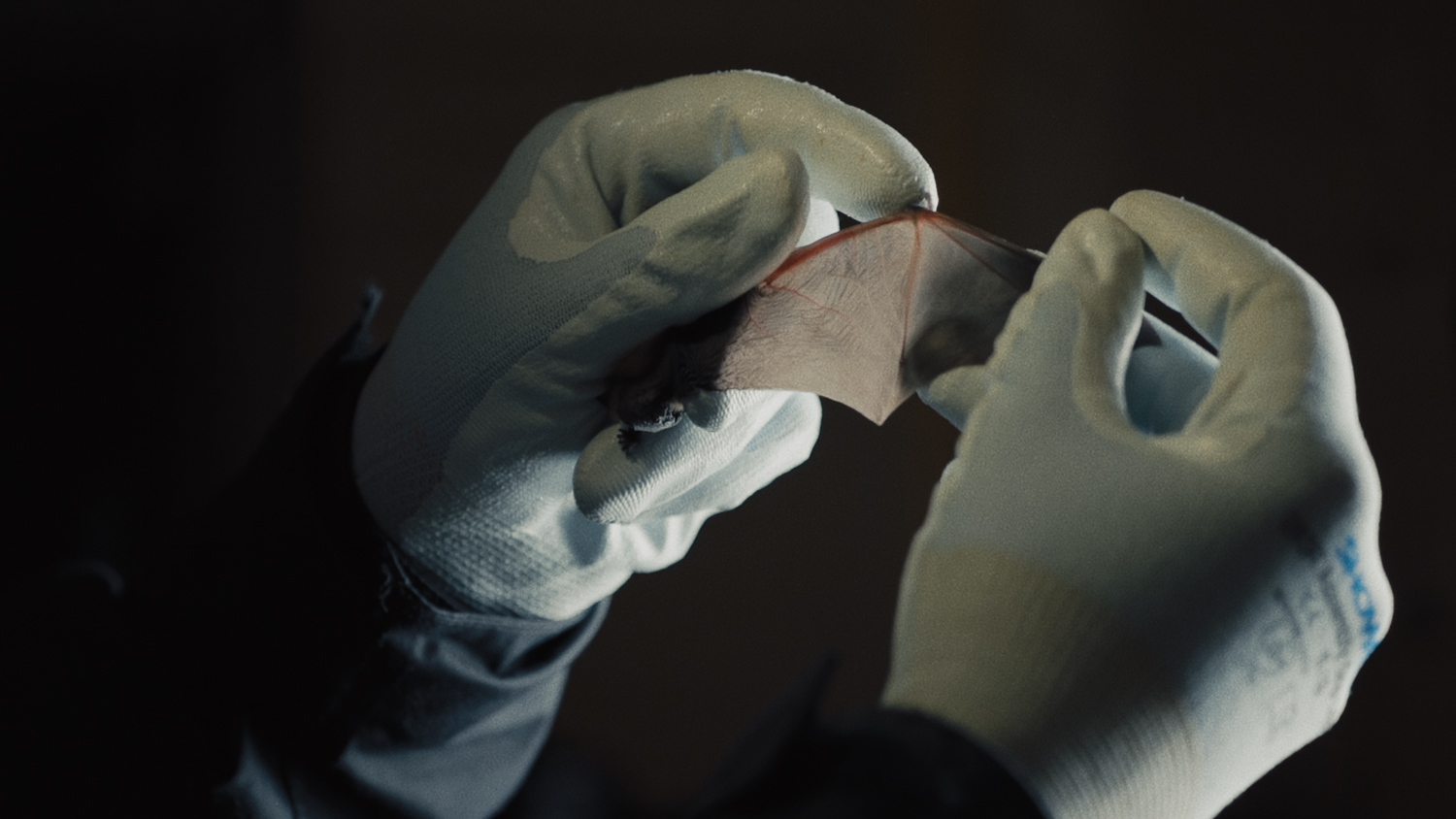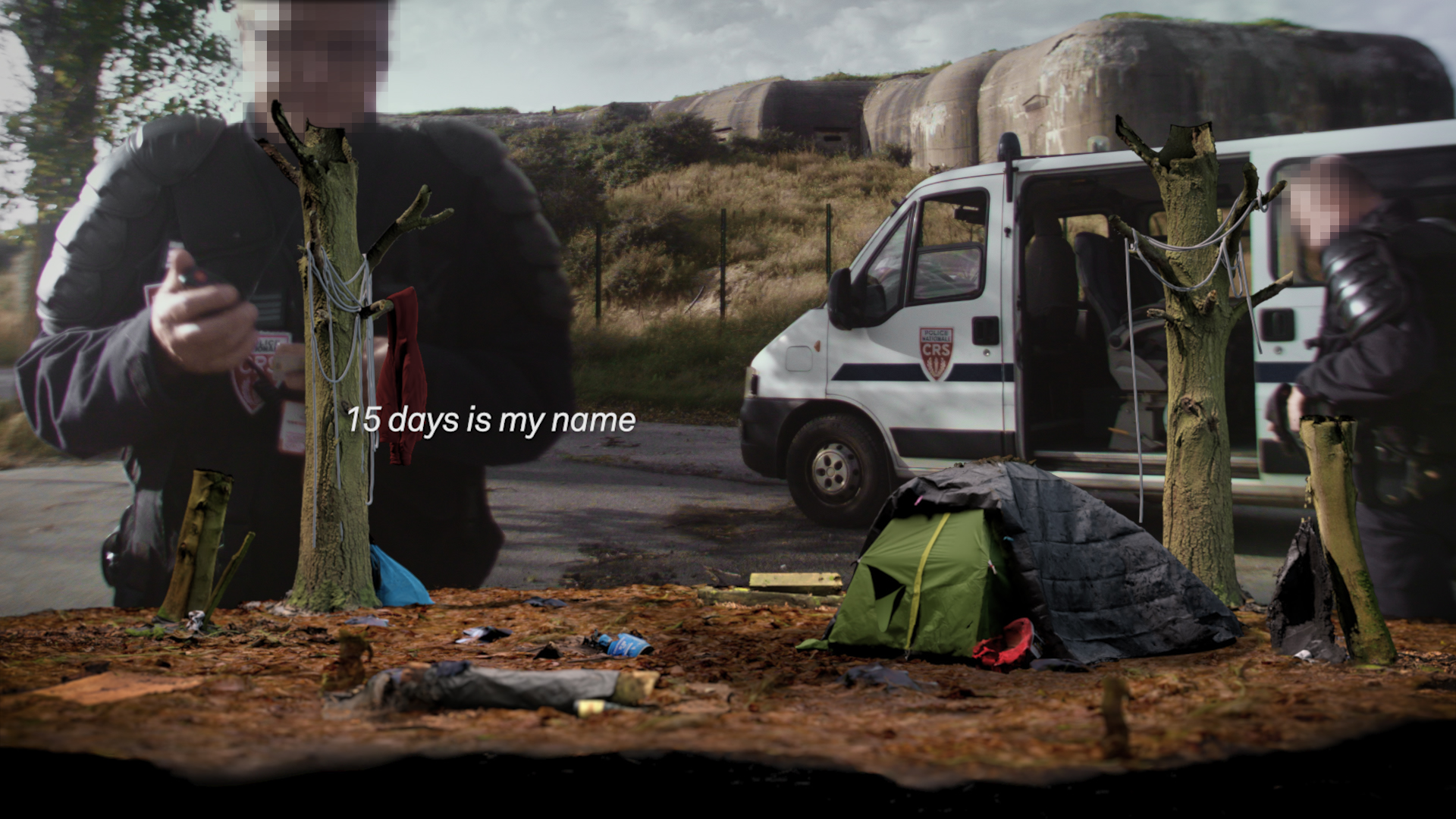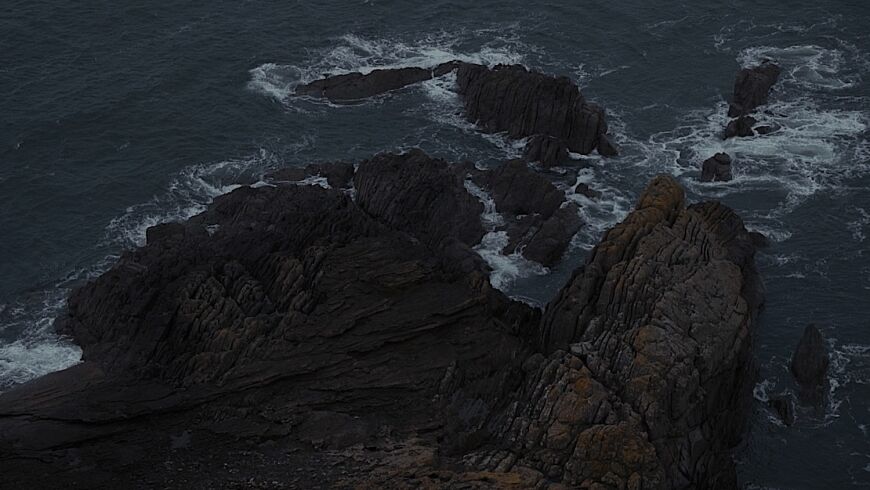Unintended Consequences
George Vasey
George Vasey looks at the concept of the 'unintended concequence' in the work of Maeve Brennan and Imran Perretta.
Projects
Click here to view Maeve Brennan's Listening in the Dark (2018) on FVU Watch.
Spoiler Alert. In the film Sliding Doors, 1998, the protagonist, played by Gwyneth Paltrow, acts out parallel stories. The film’s narrative hinges on two outcomes built around the consequences of Paltrow either missing or getting on a particular train. In the story where the character is on time, she falls in love with the man she sits next to and ends up dead. In the story where she misses the train, she meets the same man much further in the story and they live happily ever after. Life, to quote one of Paul McCartney’s more soppy songs, can be a long and winding road, and we’re never quite sure where it will take us.
A lot happens to Paltrow’s character in Sliding Doors and I won’t ruin the rest of the story for you. We may have ambitions in life, but it is the unintended consequences that often have the greatest impact. The term ‘unintended consequence’, was popularised by the American sociologist Robert K. Merton and can be outlined in three ways; beneficial, detrimental and perverse. An intended benefit of medication could be shadowed by an equally negative side effect. The increased use of antibiotics can lead to the perverse effect of antibiotic resistance. The Jerwood/FVU Awards 2018 takes the idea of the unintended consequence as its theme, with Maeve Brennan and Imran Perretta engaging with the topic from radically different positions.
Maeve Brennan’s Listening in the Dark, 2018, focuses on the consequences of the Anthropocene from the point of view of bats while Perretta’s 15 days, 2018, explores the refugee crisis. While one deals with animals and the other with humans, both films touch upon ideas of structural violence, using filmic techniques to give voice to what is misunderstood, ignored and rendered invisible within globalised abstract structures. Narrative is constructed using documentary modes such as interviews and field recording to investigate ideas of testimony. Whether it is the figure of the refugee or the symbol of the bat, both films foreground multivalent subjects that resist straightforward representation.
Brennan’s Listening in the Dark is inspired by a news story she read as a student about dead bats being found at the foot of wind turbines. Their lungs had exploded due to the drop in air pressure produced by the spinning blades. While the turbines are great for sustainable energy they are less good for bats.
It’s a powerful image — a technology built by humans to benevolently harness nature becomes an inadvertent weapon against it. In her film, Brennan uses the figure of the bat — a frequent icon of the horror and gothic genre — to de-centre an anthropocentric perspective and foreground animal perception to suggest a more nuanced reading of environmental concerns.

The bat is the only mammal that can achieve sustained flight and, as such, occupies a liminal space between the earth and the sky. This indeterminacy is perhaps why they are often associated with witchcraft and disease. They have barely changed in millions of years and, as one scientist in the film points out while holding a fossil, they seem to appear “magically” out of nowhere soon after the dinosaurs died out. In Francisco Goya’s The Sleep of Reason Produces Monsters, 1797, it is the bat that signals ignorance. Bats, then, are often hugely misunderstood yet serve as valuable companions to humans in a number of ways, they certainly predate them on this planet. By eating insects and lowering the need for pesticides, bats are valuable to agriculture and their nitrogen-rich dung makes a highly effective fertiliser.
Brennan’s film traces the social and ecological significance of the bat, exploring its sophisticated use of echolocation. As nocturnal animals, bats use echolocation as a form of sonar to avoid obstacles and hunt for prey. Some have ears that act like acoustic horns and are attuned to the frequency of moth flight — an insect they hunt for food. The bat’s relationship to its environment has been honed over millions of years, yet, until recently, it has been relatively under researched.
By employing the vivid symbol of the bat, Brennan harnesses a resonant image that counters an environmental abstraction. While our ecology is changing at an accelerated rate, it takes place outside the election cycles of political time. Our visual imaginaries are fed experientially by Hollywood’s dystopias (Mad Max, 1979 and The Day After Tomorrow, 2004, as well as journalistic images of natural disasters and more scientific and evidential imagery (graphs charting rising global temperatures). By combining archive footage, field recording and interviews - often with a highly affective soundtrack - Brennan intertwines these experiential and evidential modes.
An era of accelerated ecological change has fed a new anthropogenic visual regime of data sets, graphs and sped-up satellite imagery. These images attempt to quantify our environment and aid comprehension, bringing global conditions into the purview of human perception. In one scene in Listening in the Dark, we see a middle-aged geologist handling a three billion year old piece of rock. In another, we view the coast of Scotland, rocks colliding from different geological periods of the earth’s life. Ultimately, Brennan’s film suggests that our planet, while not inexhaustible as a source of material resources is surprisingly and hearteningly resourceful. We may seek to explain the environment yet it retains a certain opacity.
Brennan cites Donna Haraway and Bruno Latour’s ecological writing as influences, and Haraway’s calls for a “multi-species assemblage” seem particularly pertinent in relation to the film. Coining the neologism Chthulucene (pronounced thulu-scene), Haraway’s feminist writing demands an “inter-woven and symbiotic” relationship between human and non-human actors, with the de-centered human working against “bounded individualism”. The title of Brennan’s film, Listening in the Dark, can be read in two ways; it invokes bats’ sophisticated echolocation and reads as a call to action. Listening requires an attentiveness to the demands of our planet and other species. At the end of the film, a text claims that reefs are returning to offshore wind farms that are, in turn, attracting seals. Unlike the image of the dead bat, it’s an unintended beneficial consequence and a moment of qualified optimism.
Imran Perretta’s 15 days, 2018, is, in a very different way, also a work about time. Filmed around the former refugee camps of Calais and Dunkirk, the film portrays a figure called “15 days” that Perretta met on his visits. The situation is articulated as a purgatorial space where bodies and their belongings are literally stuck in the mud. People live in makeshift tents and huts waiting for something to happen. The last time that something happened to our protagonist was fifteen days ago, when his modest camp was last destroyed by French police. Human time comes up against state time. The refugees are trapped between national borders and unable to move forwards or back. The former camp is a territory where the violence of the border is most pronounced. If the airport is a space of privileged mobility and “good movement” (regulated, observed, and taxed) the former camps on the French border are where the enforcing of the modern nation state is most obvious. Here “bad movement” (unapproved, untaxed and seen as a threat) is contained.

The refugees in Dunkirk are mainly Iraqi Kurds, Afghans, Pakistanis and Syrians who are escaping persecution and war, who, after escaping violence have to suffer the dehumanising effects of further state and media violence enacted upon them.
15 days’ temporary home is represented in 3D using a technique called photogrammetry, re-creating his tent from a number of photographs. A second layer is added forming a background which continually flits between handheld footage and a blacked out space. The footage is shot by both the artist and 15 days.
The spaces in Perretta’s films are less cinematic than theatrical, and he uses a range of filmic techniques to obfuscate the subject and disorientate the spectator. His testimony remains unsteady and pockmarked with lacunae. There is a dissonance in 15 days between the handheld first person perspective and drone-like tracking shots of the muddy terrain. These different gazes — surveilled and embodied — place us in between the perpetrator of violence and its subject. It’s an uncomfortable space and Perretta demands an ethical consideration of the image in front of us.
While 15 days’ voice is present, his body remains absent. His absence mirrors his political erasure having lost his home, name and identity. The voice-over claims that he belongs to “a brown multitude,” existing as an “almost-but-not-quite” person, with the “weight of whiteness pushing down on me.” Perretta uses the tent as cypher, marked by trauma through his loss of status. With the simple act of moving, 15 days has been met with the full force of state apparatus. The tent becomes a proxy that absorbs the repeated acts of violence so as to not repeat the suffering of his protagonist.
In Violent Borders, 2016, Reece Jones talks of the structural violence of the border as the “foundation of the state as a collector, protector, and exploiter of resources and labor.” Borders, along with passports and identity documents, are technologies of governance that control “good” movement and restrict “bad” movement with the sole purpose of maintaining property and privilege. We catch 15 days in a moment of threatened dissolution. Historically the documentary image formed a contract between subject and spectator. To make something visible is to give it political representation, yet 15 days remains absent, heightening the sense of physical and emotional displacement.
In both films darkness (night time in the former and the black monochromatic background in the latter) indexes all that is unknown, mysterious and fearful. Through different forms of testimony, Brennan and Perretta oppose the space of not knowing. Through film they probe the veracity and ethical dimensions of image production. How do you represent the refugee crisis? How do you create new visual imaginaries in response to ecological catastrophe? Most importantly, how do images create demands on the spectator to act? To quote Haraway again, we need stories that are “complex enough to keep the edges open and greedy for surprising new and old connections.” Art can help give shape to thought, and as Brennan and Perretta show us, bring unwieldy topics into a sharper focus.
–––
George Vasey is Curator at Wellcome Collection & writer, trustee at New Contemporaries & Tees Valley Arts.
This text was written in response to Maeve Brennan's Listening in the Dark and Imran Perretta's 15 days, which were commissioned as part of the Jerwood/FVU Awards 2018: Unintended Consequences, a collaboration between Jerwood Arts and Film and Video Umbrella, in association with University of East London, School of Arts and Digital Industries. FVU is supported by Arts Council England.
